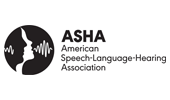
Modifying Demographic Categories
Challenge
Historically, ASHA has used the U.S. Census Bureau categories when gathering members’ confidential demographic data. Members have commented that the available options do not fully or accurately reflect how they self-identify. Our challenge became 2-fold:
- How to make our demographic category choices more inclusive for our members and provide them the opportunity to self-identify, recognizing the various identity categories that exist amongst race, ethnicity, gender, sex, etc.
- How to determine the terminology used for the different demographic categories, in addition to the labels used.
Consideration was also given to how data comparisons would be made using historical data as well as moving forward.
Actions
We developed a plan to modify the current confidential demographic categories. It should be noted that it is optional for members to provide this information to our Association. The categories and label choices in use at the start of the project that members could choose to identify themselves were:
RACE:
American Indian or Alaska Native; Asian; Black or African American; Native Hawaiian or Other Pacific Islander; White
ETHNICITY:
Hispanic, Latino, or Spanish Origin; Not Hispanic, Latino, or Spanish Origin
SEX:
Male; Female
To determine the terminology for the categories and labels, we researched the current census information, conducted focus group interviews with targeted members (e.g., constituents from our multicultural groups), and reviewed the approaches and terminology used by other major gatherers of demographic information (i.e., The Williams Institute, WPATH). In the end, the final categories and label choices are the following:
I am:
Female; Male; Nonbinary; [Fill in]
PRONOUNS:
He/Him/His; He/They; She/Her/Hers; She/They; They/Them/Theirs; Ze/Hir; Ze/Zir
ETHNICITY:
Of Hispanic/Latina/Latino/Latinx/Spanish Origin; Not of Hispanic/Latina/Latino/Latinx/Spanish Origin
DISABILITIES and/or DISORDERS:
Auditory; speech-language; mental or emotional; visual; motor-mobility
Outcomes
ASHA has received positive feedback from some of our members who feel they can more accurately self-identify with the modified demographic categories. Our membership is diverse. We will continue to work towards the goal of further increasing that diversity. We are becoming more confident about the accuracy of our member demographic profile and its use for activities such as strategic planning, ensuring representative leadership, member recruitment, resource development, advocacy efforts, etc.
As an association, our goal is to ensure our members feel included and seen. This is an important aspect of DEI work. Recognizing our society is constantly changing, we should never get to the point where we feel like we are done doing the work.